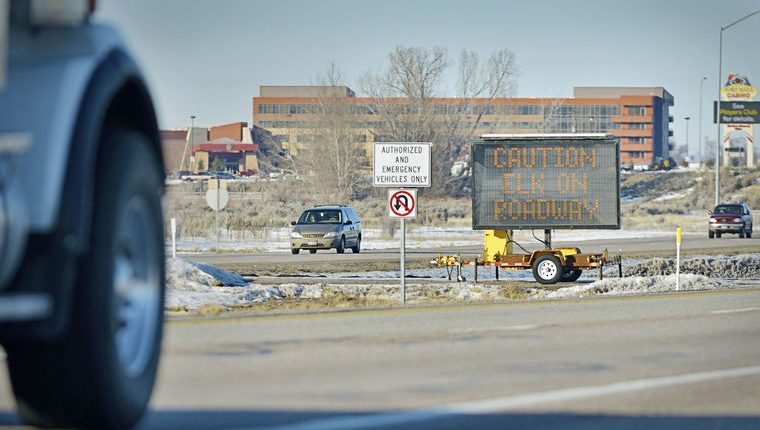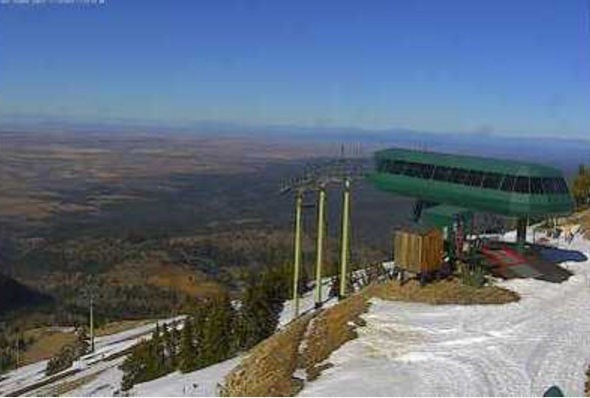The story of Natty “Lipstick” Hagood, the 29-year-old ski instructor at Jackson Hole Mountain Resort in Wyoming who impaled his lip on a tree branch earlier this month, has circulated through American mainstream media outlets and internationally by some located in Canada, Spain and New Zealand.
But Hagood doesn’t know what to make out of his recent fame and said this is a perfect example of what’s wrong with America.
“Are people grabbed by my positive attitude or the graphic nature of it?” Hagood said. “I mean, Jeff Sessions is talking to the Russians and Trump is making these completely false, outlandish claims about Obama wiretapping his house. That stuff is so much more important than a stick through my face.”
While it’s true stories about Trump and Sessions surely travel internationally, if Hagood had it his way, the stick story wouldn’t be as nearly important as people make it out to be.
He can’t complain about the unreal outpouring of support to his GoFundMe account, which surpassed the $1,500 goal by more than $600. However, Hagood would have much preferred that an earlier online crowdsourcing campaign of his to raise $1,000 to make pink “pussy hats” would be the story to go viral.
“My mom, stepdad and a family friend were the only people who donated to that campaign,” Hagood said. “I may have gone too much into the weeds before explaining what I was doing, but I don’t care, and for me standing up for people is so much more important.
When the pink hat campaign started in January, Hagood had also orchestrated a town hall meeting in Jackson, Wyoming, and invited U.S. congressional representatives for those constituents to come listen to the concerns of the people.
On the heels of the Women’s March on Washington following Trump’s inauguration, Hagood and about 500 local citizens felt, and still feel, it is crucial to stick up for oppressed individuals such as minority groups, women, immigrants or LGBT people.
“One of the senators, John Barrasso, said he couldn’t make it because he wasn’t going to be in the area,” Hagood said. “Low and behold he was 12 miles away hosting a $1,500-per-plate fundraiser.”
Apparently, Hagood reached out to television host Rachel Maddow with MSNBC, CNN and other unnamed major outlets, but nobody wanted to hear or run the story.
Now that his $1,250 insurance deductible is no longer an issue, Hagood is debating what to do with the leftover cash.
“I’ve thought about donating to ACLU, Planned Parenthood or one of the causes I believe in,” Hagood said. “I think I’ll end up saving it to kick off this environmental outdoor educational program I want to start in Colorado so that kids and the youth can get outside and realize how important the environment and nature is.”
Hagood grew up loving and experiencing the outdoors and said it connected him to this planet and made him a better human being. He’s spent his entire young adult life educating children for someone else, so now he wants to do it himself.
He also wonders when the tree jokes will stop sticking around.
“They’re hilarious and I honestly don’t know how long this will last but I’m kind of over it,” Hagood said. “I’m just a decent guy who cares with a lot of energy and feeds off connections with other people. This whole media frenzy is getting old.”
What Americans should be reading about, according to Hagood, is how many Americans will lose access to health care if congressional Republicans successfully repeal or somewhat modify the Affordable Care Act. Or that China isn’t stealing American jobs. Rather, American citizens are driving manufacturing jobs out of the country because of their purchasing tendencies.
Or the simple fact that so many people will read a news story about a ski instructor with a gruesome flesh wound, but won’t spend the time educating themselves on a story about taxes or important bills passing through the legislature.
So, if Hagood can use his recent fame as a platform for anything, it’s that Americans should stop caring about celebrities or bizarre stories and start educating themselves about how and who is running the country.
“Why does everybody care more about this stick in my face more than who I am as a person?” Hagood said. “Or more about all these Americans struggling around us?”



